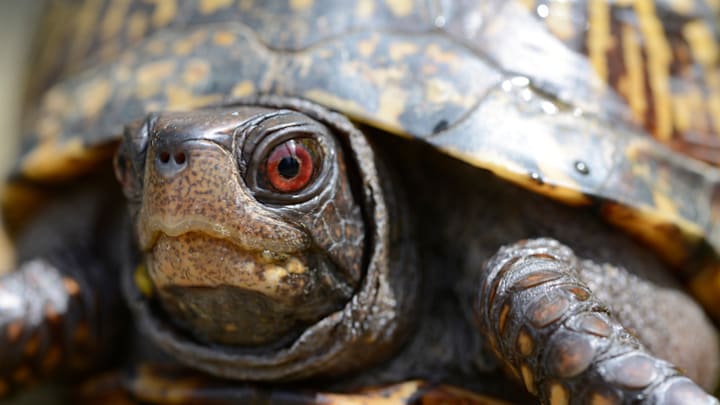Despite what it might sound like, tortoise isn’t a sophisticated synonym for turtle. But they are related in the animal kingdom.
Turtle is the common term for any member of the order Testudines (also known as Chelonia), which includes every reptile with a bony shell covering its body. Tortoise, meanwhile, refers to any animal in a specific family, Testudinidae, that falls under this umbrella. In other words, as Britannica explains, all tortoises are turtles—similar to how all hominids (a family that includes humans and great apes) are primates (all animals in the order Primates).

Since the order Testudines comprises roughly a dozen other families, however, there are plenty of turtles that aren’t tortoises. So how can you tell whether the bony-shelled reptile you’re looking at is a tortoise, or just some other type of turtle?
How to Identify a Turtle vs. a Tortoise
To start, take a look at where it lives. According to Katie Gregory, herpetology keeper at the Nashville Zoo, tortoises dwell on land, while most other turtles are able to live at least part-time in water. Their bodies reflect this capability: Turtle shells are usually flatter, thinner, and more streamlined to help them swim; their legs resemble paddles or flippers; and their feet may even be webbed. Tortoises, by contrast, have rounded or domed shells and stocky limbs that make it easier to trudge around on land. Their hind legs are often described as “elephantine”—column-like or cylindrical like the legs of an elephant.

Their diets are a little different, too. As the National Marine Sanctuary Foundation explains, tortoises are primarily herbivorous, though they have been known to scarf down insects on occasion. Other turtles are often omnivorous, padding their plant consumption with fish and other small animals.
As is common in virtually all spheres of life, there are some exceptions to the rules laid out above. Wood turtles and box turtles, for example, more or less fit the physical description of tortoises and also live on land. Though their family (Emydidae) has at times been categorized as a subfamily of Testudinidae, it’s generally recognized as its own thing.
A version of this story was published in 2021; it has been updated for 2024.
